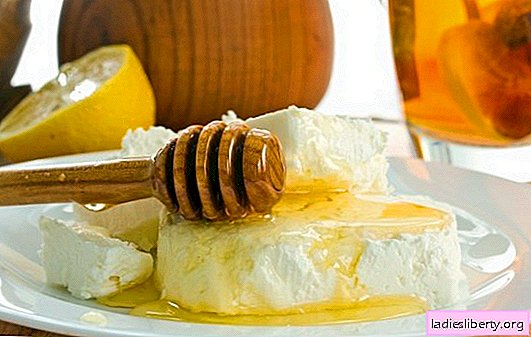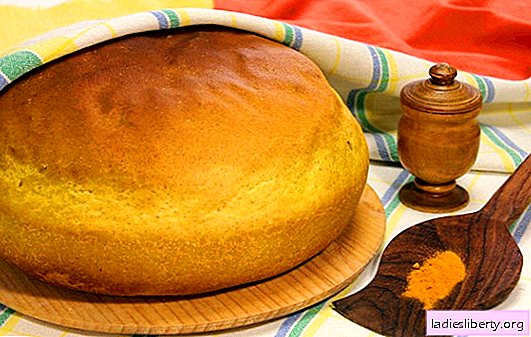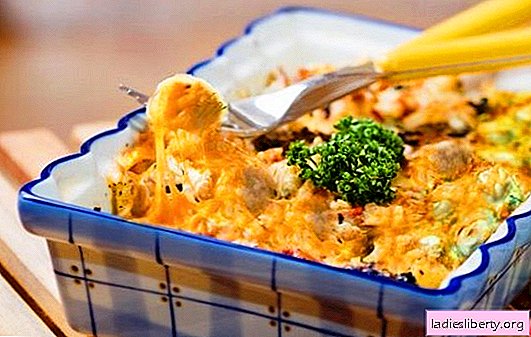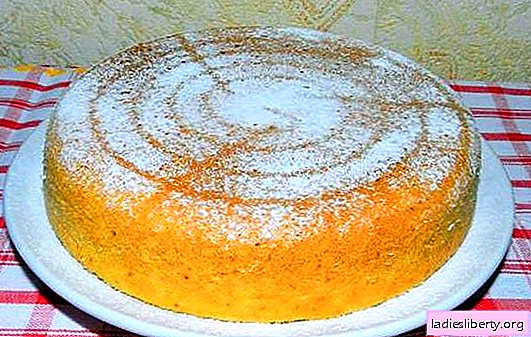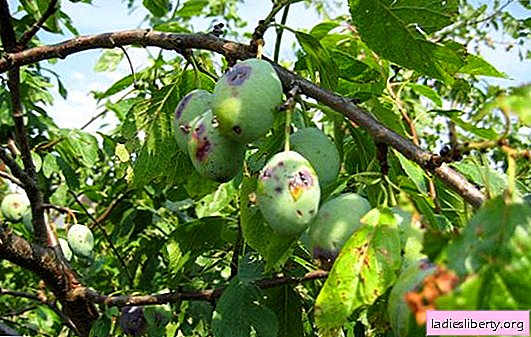
Plum is a fruit tree with tasty and healthy fruits that we can eat fresh, boil jams, jams and compotes, dry and freeze.
It contains many vitamins, has a beneficial effect on the gastrointestinal tract, preventing constipation.
Plum has always been a cultural tree, and came from the hybridization of cherry plum and thorns.
It is distributed almost everywhere.
Planting and plum care
The plum dries or the plum leaves twist - these problems can arise from improper planting and tree care. In addition, pests and diseases can affect the drain too. Plum trees are planted in autumn or spring. In the middle lane, it is preferable to spring planting, since, in the autumn - the tree may not have time to take root before the cold and there is a great danger of freezing.
Seedlings are best purchased at proven locations. This will be an additional guarantee of their health and safety. Then you can be sure that the quality seedling was not acquired by the patient and not be afraid of the diseases introduced.
For planting, pits are prepared in advance. To do this, they are dug to a depth of 60 -70 and a diameter of 60 -70 cm. The excavated soil is mixed with humus at the rate of 2 parts of the earth and one part of humus. This composition is returned to the pit. A stake of wood is driven in there, and a plum sapling is tied to it. The seedling is buried so that the root neck is 5-7 cm above the soil level. The roots fall asleep and slightly tamped. The tree is abundantly watered and the soil around it is mulched with peat or compost.
In the first 2-3 years, fertilizers are not applied, but they begin to feed on the 4th year. It can be nitrogen fertilizers for intensive growth in early spring, and later phosphoric or nitrogen-potash fertilizers for tree nutrition. In the autumn, they are fed with phosphoric potassium compounds.
In addition, pruning and thinning of the crown, prevention of thickening and removal of small growth near the plum, which this plant gives in excess, is important in care. Overgrowth can draw a lot of nutrients from the main tree.
Another agricultural technique is thinning fruit. This will allow branches to not break off, the fruits will be larger and better. Before the fruits begin to pour, it is necessary to reduce their number, removing excess ones, so that when ripening they do not touch each other. With too many remaining fruits - you can back the branches with supports.
In order for the pests and diseases to less damage the plum tree, early spring pruning should be carried out. This can prevent white rot and gum disease.
How sick the plum is. Pests and diseases? How to get rid?
The yield of plum, and the tree itself can suffer from various diseases or pests. If you do not conduct proper care and prevention, you can not get a crop and lose trees.
What diseases affect the plum? These are hole blotch, fruit rot, coccomycosis (red blotch), curly, moniliosis, bacterial blotch.
• Perforated spotting (kleasterosporiosis). The disease is expressed in ulceration of branches and shoots, gum disease. Fruits are affected to the bone. The plum dries, the leaves fall. The disease is most dangerous for trees in spring, when air humidity is high and it rains. To prevent and treat the disease, it is necessary to follow the basic rules for planting care, remove the affected branches. Avoid thickening of the crown, thinning in time. After harvesting in the fall, collect the fallen leaves, dig the soil in the garden. Treat ulcers with 1 percent Bordeaux fluid and cover with garden var. After flowering in 2-3 weeks, the plum should be sprayed with Bordeaux liquid (1%) solution or copper chloride (30-40 g per 10 l of water). Kuproskat is also used (when the buds open and then through 7-10 times), 2 ml of the drug per 10 liters of water. With the onset of the disease - Skor, Chorus, Abiga-Peak. Any chemical treatment should be no later than 20 days before harvesting.

• Fruit rot. Mostly fruits suffer from it, with mechanical damage (nested by birds, beaten by hail, etc.). First, a brown stain forms on the fetus, in heat and high humidity it grows rapidly. Spores appear here, which are then blown through the garden and infect other plants. In order to combat, such fruits need to be buried, and the trees sprayed with Bordeaux liquid.

• Coccomycosis. This is a fungal disease. The disease affects the leaves and fruits. Weak trees are most affected by poor tree care. The leaves are covered with reddish-brown small (0.5-2 mm) spots. With the development of the disease, they are interconnected, and a whitish coating appears below the leaves. Infection persists in fallen leaves. Fight with Bordeaux fluid or copper oxychloride. Infected leaves are burned.

• Curliness. Plum shoots are bent, plum leaves curl, wrinkle and turn yellow. There comes an early decline of them. To combat curliness, diseased shoots are cut out, fallen leaves are burned and plants are sprayed with a 3 percent solution of Bordeaux fluid. For prevention, you need to choose disease-resistant varieties for planting, such as Vengerka, Renkold and others.

• Bacterial spotting - Another fungal disease. Dark spots appear on the fruits, similar to sores, which grow and turn black. The disease is caused by bacteria living on the kidneys and branches. The disease provokes heat, humidity and frequent rains. Plum leaves dry and fall off. For prevention and treatment, trees are treated with a solution of three percent Bordeaux fluid. Other copper-containing products are also used: Abiga-Pak, Oksikhom. The fallen leaves are collected and burned.
• Moniliosis. The disease affects flowers, leaves, twigs, fruits. Plum leaves and branches dry, the fruits rot and dry. The moniliosis fungus forms infected foci in the tissues of the plant, where spores arise. The disease begins in dry fruits and affects the entire plant. The drain will dry. Spores can spread insects, especially with wounds and injuries. In order to prevent thinning the crown, destroy the falling leaves and damaged shoots. They also treat Bordeaux liquid. 3-6 times per season. 5-6 times if spring and summer are rainy. At the same time, they also fight with spore carriers - insects.
Pest plums. How to fight?
• Codling moth. This pest prefers apple and pear, but does not disdain and plum. Its caterpillars are very voracious, can damage up to half of the crop. They eat fruit and ovary. To get rid of this pest, the branches are cleaned of dying bark, they dig the soil in the spring. After flowering, they are sprayed with Inta-Vir at the rate of 3 tablets per bucket of water. They make belts on the plum trunk, periodically checking them and destroying harmful insects. Cracks in the crust are covered with clay.
• Plum thorn. A very dangerous pest is small black with yellow paws. In winter, a larva lives in fallen fruits. The female lays eggs in the spring inside the fetus and the larvae eat the seed. The defeat of this pest causes the fruit to fall to the beginning of ripening. To protect against the sheath - the fallen plums are disposed of. And after the flowering of the tree - they treat it with Insegar "(5 g per bucket of water)
• Aphids very dangerous for plums. She eats juice from leaves and young shoots. Plum leaves curl. Shoots stop growing. Young growth in trees is the most attractive for plum aphids. To protect the trees, cuttings should be cut early in spring. And when aphids appear on trees, they are treated with Inta-Vir.
Proper care and prevention and timely treatment from pests and diseases will help you save the tree and get a good harvest every year.

